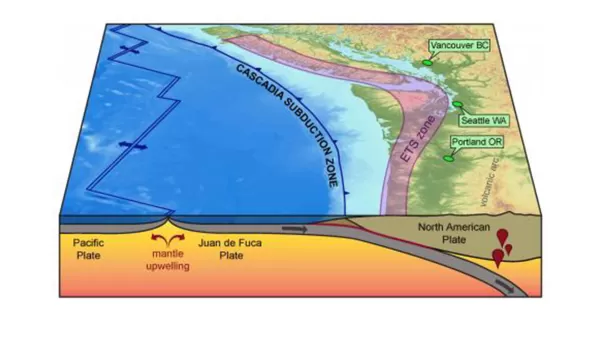
A deeper look into where the really big one could occur
For the first time, NSF-funded researchers revealed a detailed look at the potential for a major earthquake off the coasts of southern British Columbia, Washington, Oregon and northern California.
The new study characterizes the Cascadia Subduction Zone, which includes the "megathrust" fault, where the largest earthquakes initiate and spread, to inform potential earthquake and tsunami hazards.
The Cascadia Subduction Zone is 600 miles long and marks where the Juan de Fuca plate is subducting beneath the North American plate. "Although we previously had considerable information about the depth and geometry of the part of the megathrust that’s deep in the subduction zone under land, we had sparse information about the very important offshore portion where the large destructive earthquakes initiate because it’s hidden beneath the seafloor," said Suzanne Carbotte, the lead author and marine geophysicist at Columbia University’s Lamont-Doherty Earth Observatory.
To get to the latter part, Carbotte and a team of researchers led an NSF-funded cruise in 2021 aboard the ship M.G. Langseth, part of the NSF-supported academic research fleet, which is equipped with marine instruments that emit and record sound pulses that can penetrate the seafloor.
The researchers then read the echoes and converted them into images, like sonograms, to characterize the geometry and overlying sediments of the Juan de Fuca plate and the structure of the overriding North American plate.
They found that the megathrust fault is not one continuous structure but rather divided into at least four segments, each potentially unaffected by movements from the others. Longer segments would cause longer ruptures and bigger earthquakes, so movement on one of the segments could be buffered from movement on another.
"Our findings will directly help people who study earthquake and tsunami hazards for the region," Carbotte said.
The team published its findings in the journal Science Advances.
